About one-third of children with ADHD still have symptoms in adulthood. The result is about 8 million adult Americans who live with attention deficit disorder. That’s approximately 4.4 percent of the total population over the age of 18, according to the National Institutes of Mental Health.
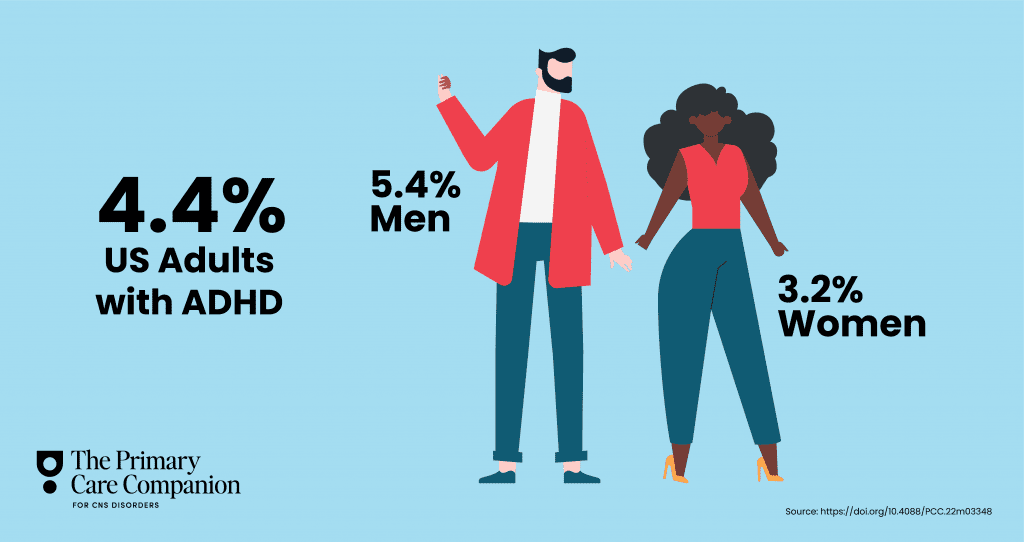
Adult ADHD carries a high economic burden. The annual direct costs alone may be as high as $194 billion. Lost work productivity and income carry the biggest price tag for individual patients. Unemployment and frequent use of the healthcare system also hit their pocketbooks pretty hard.
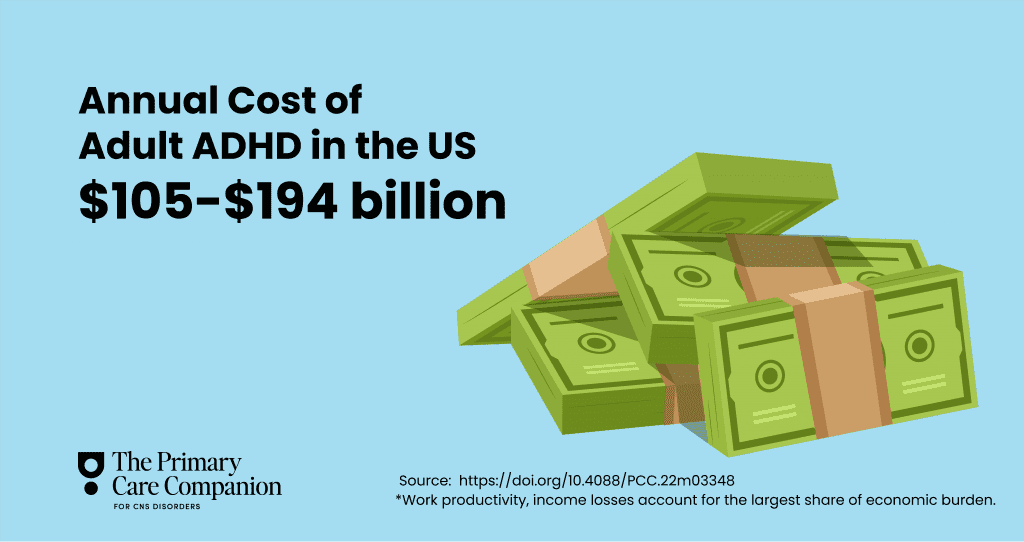
The authors of a new The Primary Care Companion for CNS Disorders (PCC) study suspected that different treatment protocols might change the economics of ADHD. To test this theory, the researchers looked to the National Health and Wellness Survey. By combining detailed information about demographics, behaviors, and outcomes from the survey with the medical records of 8,432 adults with self-reported ADHD, they were able to create a snapshot of what medical expenses look like for this population.
The researchers identified four unique treatment groups for their analysis:
- Those on immediate-release (IR) stimulants
- Those on extended-release (ER) stimulants
- A cohort who used a combination of the two types of drugs
- Patients not taking any type of ADHD medication
Other than the treatment differences, the groups were more or less the same demographically and in terms of mental and physical health.
One thing the data made clear: the unmedicated group visited the doctor significantly more often than any of the medication groups. They averaged 4.59 outpatient visits per year. By comparison, the ER + IR group had an average of 2.30 outpatient visits per year. The IR and ER groups had slightly higher average number of annual outpatient visits, 3.43 and 3.69 respectively. The results suggested that patients treated with longer duration of effect (DoE) formulations have better symptom management, the authors concluded.
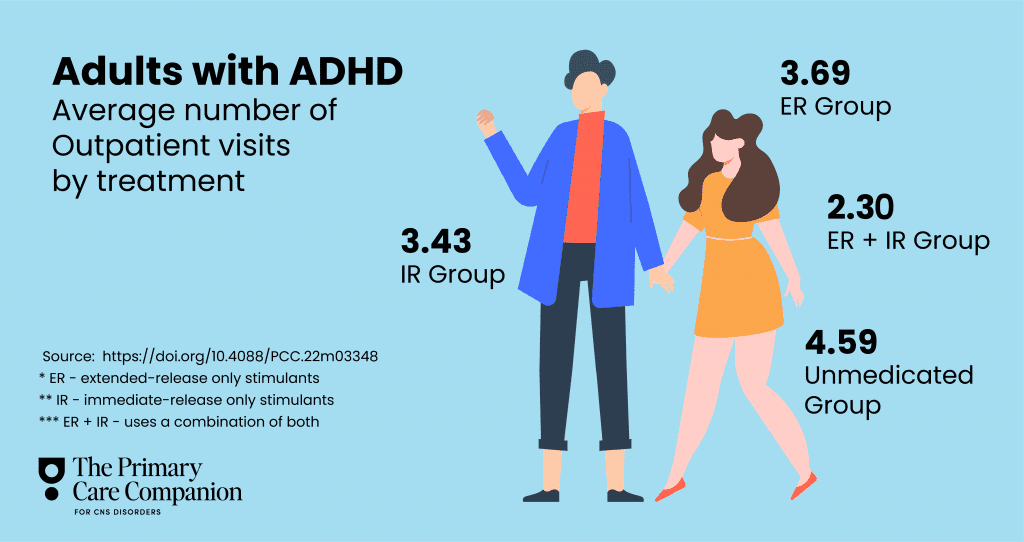
Unmedicated patients had a 5-fold increase in hospital visits. While the researchers pointed out this wasn’t statistically significant, it could be clinically significant when compared to the other groups. The ER+IR group spent the least amount of time in the hospital, with just .111 visits on average per year. Here again, the data seemed to support the potential benefits of DoE formulations for ADHD treatment, the researchers said.
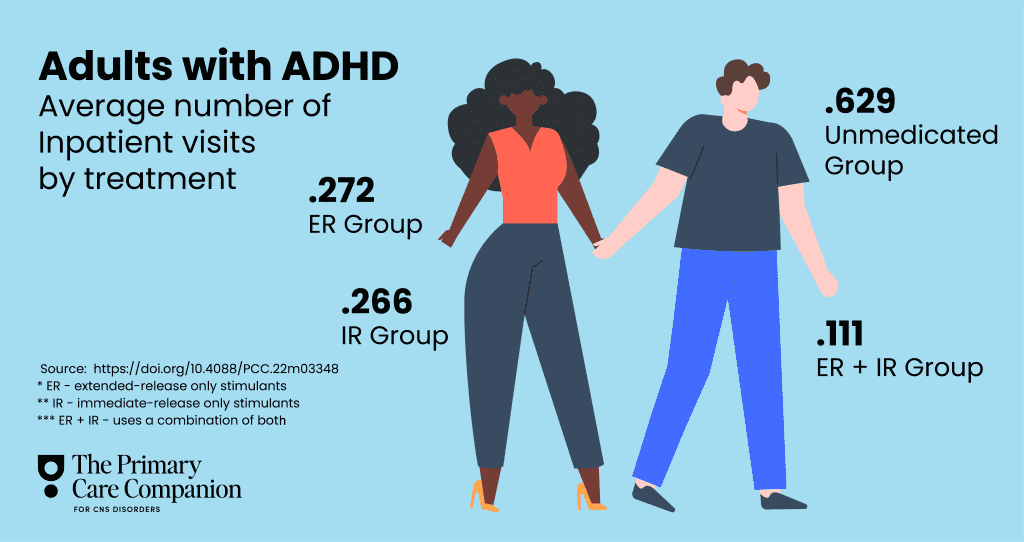
Perhaps the most shocking stat the study uncovered was the amount of money unmedicated patients spend each year in accordance with their diagnosis compared to the other treatment groups. Patients who didn’t take any ADHD medication spent double the dollar amount in direct costs compared to the single medication groups. And, they spent more than three times the dollar amount compared to the medication combo group.
But as the authors pointed out, it’s important to note that these were averages. Cost of care varied widely from individual to individual depending on health insurance coverage and specific healthcare needs. A number of other factors came into play as well, including severity of symptoms, type of medication prescribed, and the location and type of medical services available.
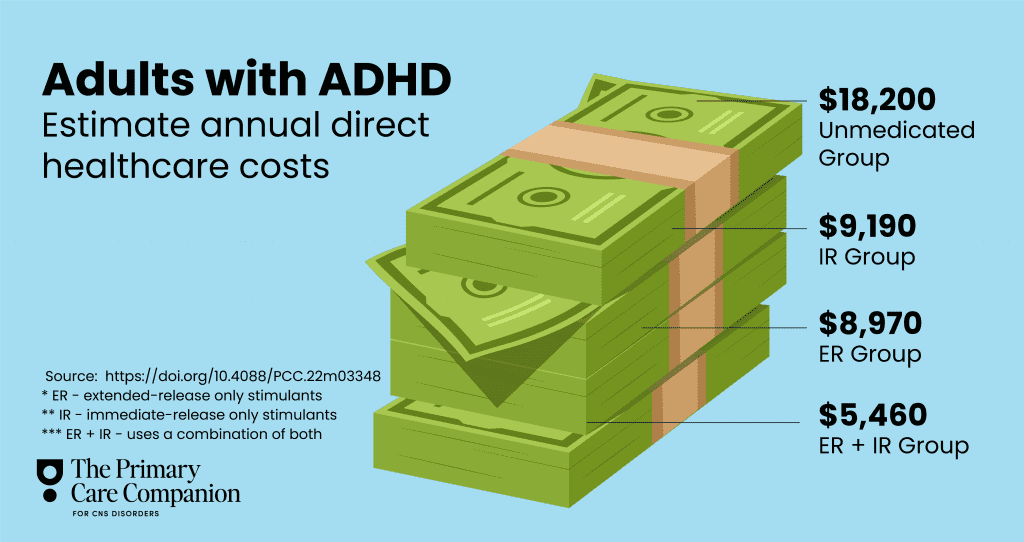
So the study’s big takeaways? Unmedicated adults with ADHD had more healthcare visits and higher expenses. Individuals in the combo ER+IR group had the lowest number of hospital visits and the lowest healthcare costs. They also took the fewest trips to the doctor’s office. DoE with ER formulations may lead to lower healthcare resource utilization and costs. The authors called for further research to evaluate the long-term benefits and potential risks of DoE with ER formulations in adult patients with ADHD.
Read the original research: Adult ADHD carries a high economic burden.



